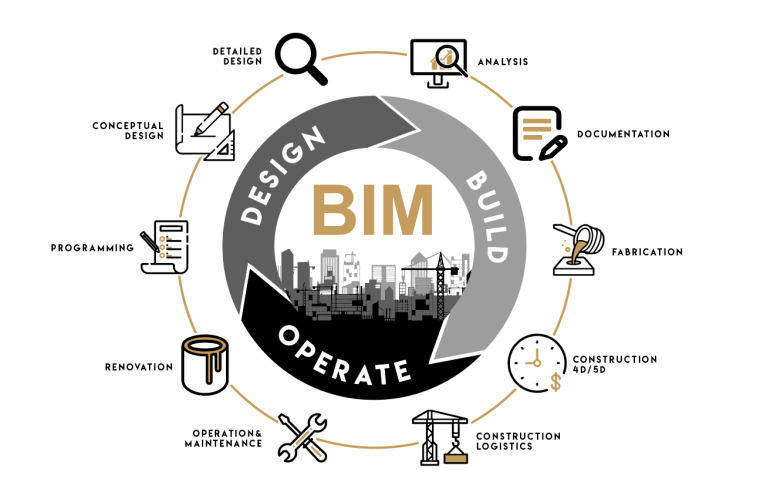July 11, 2024 • Business
The construction industry is undergoing a transformation, with Building Information Modeling (BIM) at the forefront. BIM is not just 3D modeling; it’s a comprehensive process that streamlines collaboration, enhances design accuracy, and improves project outcomes.
What is BIM?
BIM is much more than 3D modeling software. It is a comprehensive process that creates and manages digital representations of the physical and functional characteristics of a building. These digital models serve as shared resources, enabling seamless collaboration among architects, engineers, contractors, and other stakeholders throughout the project lifecycle.

KEY BENEFITS OF BIM
THE FUTURE OF CONSTRUCTION WITH BIM
As BIM adoption grows, it is becoming a global standard for modern construction. Governments and regulatory bodies worldwide are mandating BIM for public infrastructure projects, recognizing its potential to improve project outcomes.
Looking ahead, BIM will continue to integrate with cutting-edge technologies such as IoT (Internet of Things) and robotics to create smarter, more connected construction workflows. The ultimate goal is a fully integrated construction ecosystem where all stakeholders work in harmony to deliver projects faster, better, and more sustainably.

EMERGING TRENDS IN BIM
Integration with Artificial Intelligence (AI): AI is transforming BIM by automating tasks such as clash detection, material optimization, and risk assessment. Predictive analytics powered by AI enables project teams to make informed, data-driven decisions.
Digital Twins: BIM is increasingly being used to create digital twins—virtual replicas of physical structures. These digital models enable real-time monitoring, predictive maintenance, and lifecycle management.
Augmented Reality (AR) and Virtual Reality (VR): AR and VR enhance BIM by offering immersive visualization experiences. Stakeholders can virtually walk through models, improving understanding and enabling quicker approvals.
Source: ISO 19650 BIM Standards, McKinsey Report: The Next Normal in Construction.
Meet the author
Keep reading
-

How BIM Can Save Time and Money in Construction Projects
January 26, 2025 • BIM is a Game Changer
In today’s competitive construction landscape, time and cost management are critical for project success. One technology that has consistently proven its worth in this regard is Building Information Modeling (BIM). BIM isn’t just a tool for 3D modeling; it’s a process that integrates data, design, and collaboration to optimize efficiency and reduce costs across all stages of a project.
